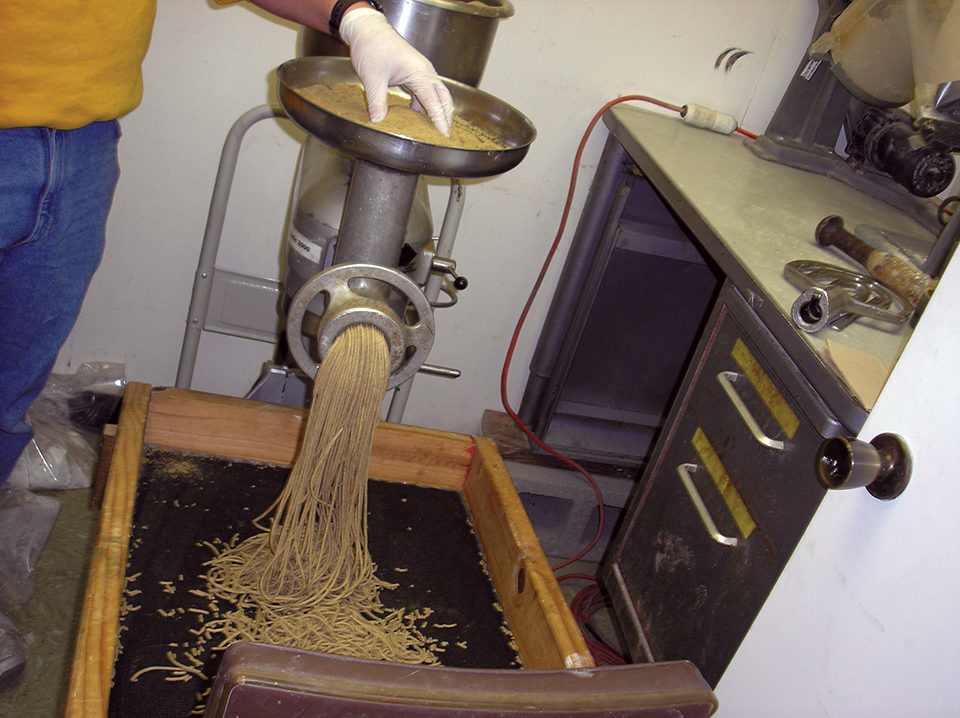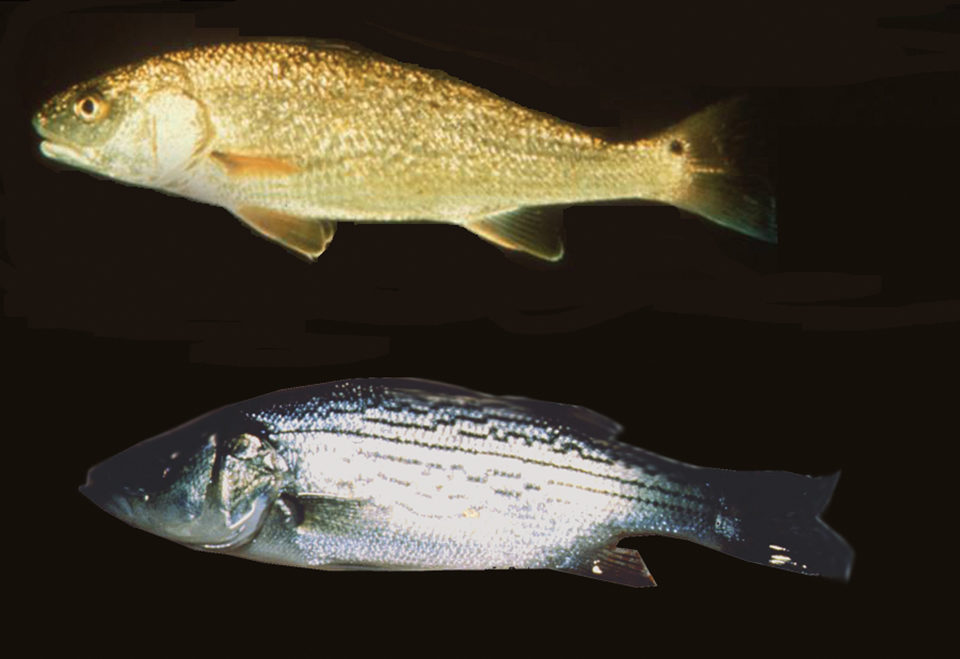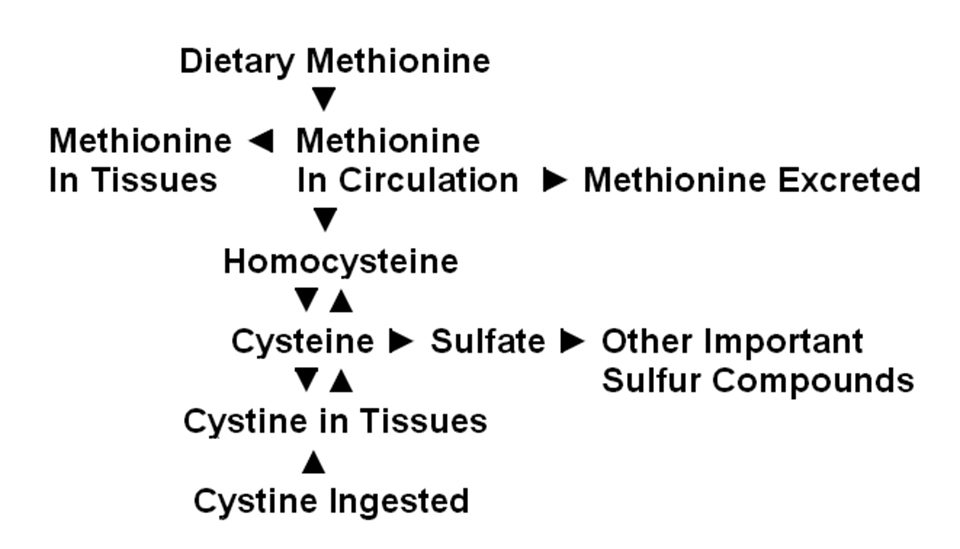Important element of fish nutrition varies by species

Various plant feedstuffs are increasingly being considered for use in fish diets to reduce the dependence on fishmeal and other animal protein feedstuffs, and thereby reduce feed costs in aquaculture. Many of these plant feedstuffs are limiting in the sulfur amino acids methionine and cystine relative to fishmeal and other animal proteins.
Therefore, the sulfur amino acid nutrition of fish is an increasingly important aspect of fish nutrition. Various studies have been conducted to more fully understand and satisfy the total sulfur amino acid (TSAA) requirements of fish.
Biochemical functions
Methionine is involved in three main biochemical functions. It takes part in protein synthesis as a constituent amino acid, serves as a methyl donor, and is a sulfur donor in intermediary metabolism. As a methyl donor, methionine undergoes conversion to S-adenosylmethionine, a principal donor in carbon metabolism. Methionine in combination with adenosine triphosphate catalyzed by the enzyme S-adenosylmethionine synthase and magnesium plays key roles during S-adenosylmethionine synthesis.
The methyl groups of important biochemicals such as creatine, choline, and carnitine may be derived from methionine. The sulfur provided by methionine through cysteine is used as a constituent of glutathione, taurine, and mucopolysaccharides such as chondroitin sulfate.

Fish diet supplementation
Along with lysine, methionine is a limiting amino acid in many plant ingredients used to replace fishmeal in aquafeeds. Soybean meal, which has been used most extensively in replacing fishmeal in diets for fish and shrimp, is typically deficient in methionine and cysteine.
Various forms of methionine and other compounds have been evaluated as to their efficacy in meeting the total sulfur amino acid requirements of commercially important fish. In most studies, the naturally occurring form L-methionine was used as the source of supplemental methionine. However, a synthetic DL-methionine form is also available.
When DL-methionine is supplied in fish diets, it has to be converted to L-methionine before its utilization in the body for protein synthesis. DL-methionine is converted by oxidation into a keto analogue and then into L-methionine through transamination. The efficiency and degree of conversion varies with different animals, and in most fish studied to date, the utilization of dietary DL-methionine has been rather efficient.
Methionine hydroxyl analogue (MHA) is a synthetic, sulfur-containing compound that also can be converted to methionine via a two-step process of oxidation and amination of the alpha carbon. MHA has been extensively used in poultry and swine feeds, and recently in experimental diets for hybrid striped bass and other fish species. It was reported that MHA was only 26 percent as efficient as L-methionine for channel catfish, but 75-100 percent efficiency has been reported in hybrid striped bass and red drum.
Interrelationships with other sulfur amino acids
Cysteine is a dispensable amino acid that can be synthesized from methionine. If a cysteine-free diet is offered to fish, part of the dietary methionine is used for protein synthesis and part is utilized for the production of cysteine, which is incorporated into synthesized protein as cystine.
Methionine is believed to be converted into cysteine via homocysteine and serine. The presence of cysteine in a diet can limit the amount of methionine that must be converted into cysteine, thereby reducing the overall amount of methionine required to meet the TSAA requirement. This is commonly referred to as the sparing action of cysteine on methionine. Therefore, both the methionine and cysteine contents of diets must be considered together in meeting the sulfur amino acid requirements of fish.
Cysteine can spare and replace up to 50 percent of the TSAA requirements of Indian major carp and several other fish species. The biochemical interconversions of methionine and cysteine are depicted in Fig. 1.

Quantitative dietary TSAA requirements have been estimated for several commercially important fish species, including salmonids (0.70-0.92 percent of diet), channel catfish (0.56 percent), hybrid striped bass (1.00 percent), and Indian major carp (1.42 percent of diet). Species-specific differences in the TSAA needs of fish have been well documented.
Methionine manipulation in fish
Several studies have been carried out in recent years at the second author’s laboratory at Texas A&M University in Texas, USA, to quantify TSAA requirements and evaluate various supplements in red drum and hybrid striped bass. These studies demonstrated that adequate levels of methionine are required to support optimal growth, survival, feed efficiency, and nutrient utilization. Cysteine could replace methionine up to 50 percent in both red drum and hybrid striped bass.
Recent studies also indicated that the hydroxy analog of methionine was well utilized by red drum in meeting the TSAA requirement, but had slightly lower utilization by hybrid striped bass. Research continues in an effort to optimize the production of least-cost, yet nutritionally balanced diet formulations for commercial aquaculture.
(Editor’s Note: This article was originally published in the April/May 2006 print edition of the Global Aquaculture Advocate.)
Now that you've finished reading the article ...
… we hope you’ll consider supporting our mission to document the evolution of the global aquaculture industry and share our vast network of contributors’ expansive knowledge every week.
By becoming a Global Seafood Alliance member, you’re ensuring that all of the pre-competitive work we do through member benefits, resources and events can continue. Individual membership costs just $50 a year. GSA individual and corporate members receive complimentary access to a series of GOAL virtual events beginning in April. Join now.
Not a GSA member? Join us.
Authors
-
H. Shivananda Murthy, Ph.D.
Department of Aquaculture
University of Agricultural Sciences
College of Fisheries
Mangalore 575002, India[109,111,99,46,111,111,104,97,121,64,53,48,121,104,116,114,117,109,115,104]
-
Delbert M. Gatlin III, Ph.D.
Department of Wildlife and Fisheries Sciences
Texas A & M University System
College Station, Texas, USA
Tagged With
Related Posts

Aquafeeds
Aquafeed supplementation with crystalline amino acids
Authors present a practical review of modern formulation options including crystalline amino acids in fulfilling nutritional requirements in aquafeeds.

Health & Welfare
Effect of dietary methionine on Pacific white shrimp juveniles
This study tested five diets formulated with increasing levels of methionine (Met) and Met + cysteine (Cys) and their effect on growth performance of juvenile Pacific white shrimp stocked at 50, 75 or 100 animals/m2 in a green water system.

Health & Welfare
Grain distillers dried yeast in practical diets for juvenile Pacific white shrimp
A study evaluated the production response of Pacific white shrimp fed diets containing increasing levels of grain distillers dry yeast in two growth trials.

Aquafeeds
Insect meals: Novel protein, fat sources for farmed shrimp
Poor-quality ingredients can’t become good-quality ingredients. Quality protein is essential for the healthy growth of any omnivorous or carnivorous aquaculture species. Insect meals seem to fill this need, and their mass-scale production appears to be sustainable.


